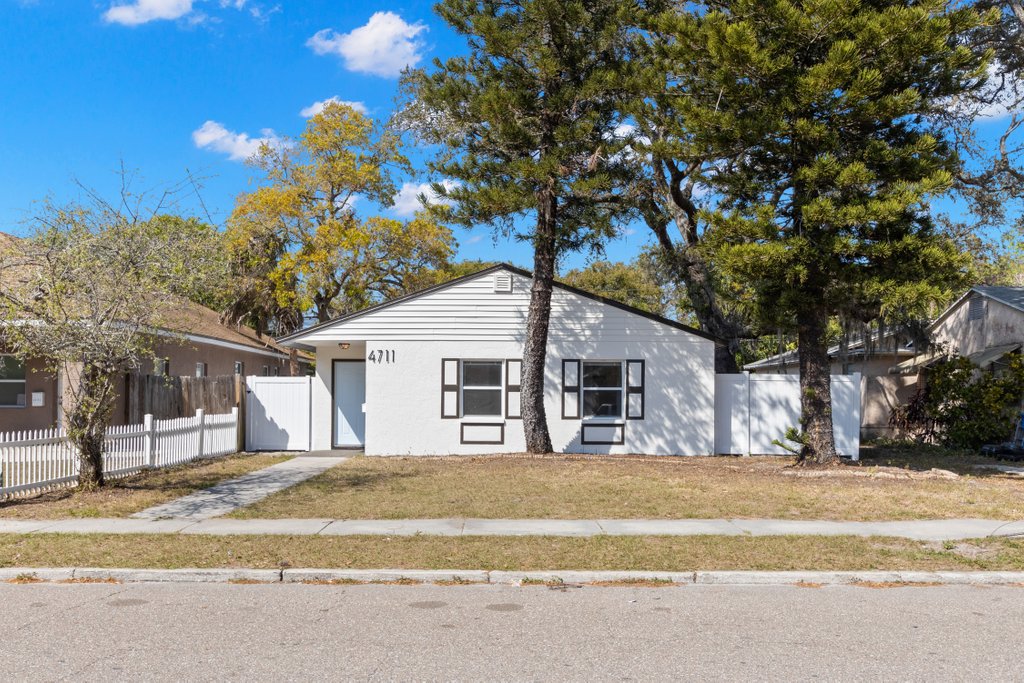
How to Maintain Your Home’s Exterior Paint: A Handyman’s Tips for Longevity
Your home’s exterior paint serves as both a protective barrier and a significant element of curb appeal. Over time, however, exposure to the elements can cause your paint to fade, peel, or crack, diminishing its appearance and leaving your home vulnerable to damage. Regular maintenance of your exterior paint not only keeps your home looking fresh but also extends the life of the paint job, saving you money in the long run. In this article, we’ll explore some essential handyman tips for maintaining your home’s exterior paint and ensuring its longevity.
1. Regularly Inspect and Clean Your Exterior
The first step in maintaining your home’s exterior paint is regular inspection and cleaning. Over time, dirt, dust, pollen, and other pollutants can accumulate on your walls, leading to discoloration and promoting the growth of mold and mildew. Regular cleaning helps to preserve the vibrancy of your paint and prevent damage.
How to Clean Your Exterior:
- Use a Garden Hose or Pressure Washer: For general cleaning, a garden hose with a spray nozzle can effectively remove surface dirt and dust. For tougher grime, consider using a pressure washer. However, be careful not to use too much pressure, as this can damage the paint or underlying siding. Aim for a pressure setting between 1,200 to 1,500 psi.
- Mild Detergent and Soft Brush: In areas where mildew or mold is present, mix a solution of water and mild detergent (or a specialized mildew cleaner) and scrub the affected areas with a soft brush. Rinse thoroughly with water to remove any residue.
- Clean Gutters and Downspouts: Clogged gutters can lead to water overflow, which can cause streaks and stains on your exterior paint. Make sure to clean your gutters regularly to prevent this issue.
Regular cleaning, ideally once or twice a year, will help keep your exterior paint looking fresh and prevent buildup that could lead to damage.
2. Address Cracks and Peeling Paint Immediately
Cracks and peeling paint are common issues that can develop over time, especially in areas exposed to harsh weather conditions. These imperfections not only detract from your home’s appearance but also expose the underlying materials to moisture, which can lead to rot and further damage.
Steps to Fix Cracks and Peeling Paint:
- Identify Problem Areas: During your regular inspections, check for any signs of cracking, peeling, or blistering paint. Pay special attention to areas around windows, doors, and trim, as these spots are more prone to wear and tear.
- Scrape and Sand: Use a paint scraper or putty knife to remove any loose or peeling paint. After scraping, sand the area with fine-grit sandpaper to smooth out the surface and create a better base for the new paint.
- Prime the Surface: Before applying paint, it’s important to prime the exposed areas. A good-quality primer will seal the surface, improve paint adhesion, and enhance the durability of the new paint layer.
- Touch Up with Paint: Once the primer is dry, apply a coat of matching paint to the repaired area. If the damaged area is large or noticeable, you may need to repaint the entire section to ensure a uniform appearance.
By addressing cracks and peeling paint promptly, you can prevent minor issues from escalating into more significant and costly repairs.
3. Protect Your Paint from the Elements
Your home’s exterior is constantly exposed to the elements—sun, rain, wind, and fluctuating temperatures—all of which can take a toll on your paint job. Taking steps to protect your paint from these factors can extend its lifespan and keep your home looking its best.
How to Protect Your Exterior Paint:
- Apply a Sealant: After painting, consider applying a clear sealant to provide an additional layer of protection against moisture and UV rays. Sealants are especially beneficial for wood surfaces, as they prevent water absorption that can lead to swelling, cracking, and paint peeling.
- Trim Overgrown Vegetation: Trees, shrubs, and vines that grow too close to your home’s exterior can cause damage to the paint by trapping moisture and encouraging mold growth. Regularly trim back any overgrown vegetation to maintain proper airflow around your home and reduce the risk of damage.
- Install or Repair Weather Stripping: Weather stripping around windows and doors not only improves energy efficiency but also helps protect your paint from moisture infiltration. Check the condition of your weather stripping regularly and replace it if it’s worn or damaged.
4. Repaint When Necessary
No matter how well you maintain your exterior paint, it will eventually need to be repainted. The key is knowing when to repaint before the damage becomes severe. On average, a high-quality exterior paint job should last between 5 to 10 years, depending on the materials used and the local climate.
Signs It’s Time to Repaint:
- Fading or Discoloration: Over time, exposure to sunlight will cause your paint to fade. If you notice significant color changes or discoloration, it may be time for a fresh coat of paint.
- Widespread Cracking or Peeling: If large areas of your exterior are cracking, peeling, or blistering, it’s best to repaint before the underlying materials are compromised.
- Chalking: Chalking is a powdery residue that forms on the surface of painted areas as the paint degrades. While some chalking is normal over time, excessive chalking indicates that the paint is breaking down and needs to be replaced.
When repainting, choose high-quality paint that is appropriate for your home’s exterior materials and local climate. Hiring a professional painter or handyman can ensure that the job is done correctly, with proper preparation and application techniques that will extend the life of your new paint job.
Conclusion
Maintaining your home’s exterior paint is essential for preserving its appearance and protecting it from the elements. By regularly cleaning, addressing damage promptly, protecting the paint from environmental factors, and knowing when to repaint, you can extend the life of your exterior paint and keep your home looking beautiful for years to come. A skilled handyman can assist with all aspects of paint maintenance, from inspections and minor repairs to full repaints, ensuring that your home remains in top condition. With the right care and attention, your exterior paint will continue to provide both beauty and protection for your home.
